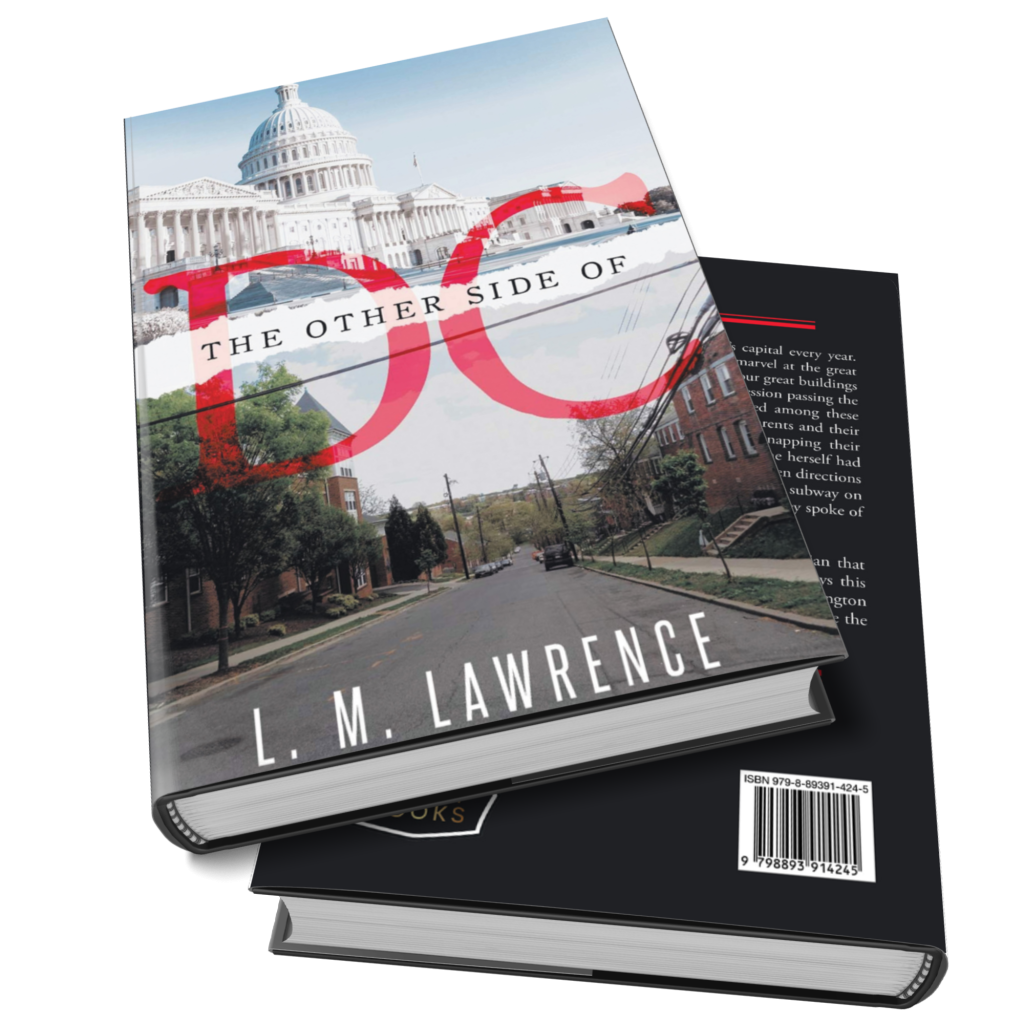
“The Other Side of D.C” by L.M. Lawrence is a gritty, emotionally charged story that lifts the veil on life in the shadowed corners of Washington, D.C. This is not the city of monuments and politics—this is the city of cracked sidewalks, broken families, and lives caught in the clutches of addiction. Through the voice of Dominique Morton, a woman battling her own demons while trying to maintain a semblance of normalcy, readers are taken on a deeply personal journey through drug use, love, heartbreak, recovery, and the resilience of the human spirit. With vivid scenes and an unflinching eye for truth, Lawrence paints a portrait of D.C. life rarely seen or spoken about, one that is as heartbreaking as it is hopeful. Published by Citi of Books, this is now available on Amazon, Barnes & Noble, and other major retail platforms.
The author L. M. Lawrence was born and raised in the nation’s capital. She is extremely proud to be a Washingtonian. Around the middle of the sixties the city was nicknamed the Chocolate City. Afro-American were settling in the city in large numbers. Her father was among those who came to the city after World War II. He was born in Blackstone Virginia and raised in Petersburg Virginia. Her mother was also born and raised in Washington, DC. Her mother family resided in the southwest section of the city.
Her parents met while working in a laundry in the late forties and were married in the Catholic Church. Her parents were blessed with their baby girl in August 1952. During the early sixties, the family was blessed with a new addition another beautiful baby girl. Although the family lived in the projects of the city, they lived a happy life. Her father worked to support his family, while her mother was a homemaker and cared for their two daughters.
The story centers around Dominique Morton, a functioning addict navigating her life in Southeast D.C. during the late 1990s and early 2000s. The narrative begins with her struggle to complete her fourth step in a twelve-step recovery program—a step requiring a fearless moral inventory. This act of reflection opens the floodgates to a series of flashbacks that chronicle Dominique’s tumultuous experiences on the streets, in her relationships, and within herself.
Through vivid depictions of drug deals, domestic struggles, workplace stress, and encounters with both violence and tenderness, Lawrence builds a raw and authentic depiction of addiction’s hold on an individual. Dominique’s path is not linear—she relapses, she gets hurt, she hurts others—but through it all, she seeks a deeper truth and clings to hope. The book culminates in a message of endurance and the importance of facing one’s past to build a better future.
Overall, L.M. Lawrence’s “The Other Side of DC” is a soul-baring, gripping read that doesn’t sanitize or dramatize its subject matter. It invites readers into the lived reality of addiction with a level of honesty and intimacy that is both rare and necessary. Dominique’s story is not just about crack pipes and poverty—it’s about survival, motherhood, faith, and the everyday acts of courage that go unnoticed.

“The Other Side of DC” by L.M. Lawrence is now available for purchase through the links provided below:

